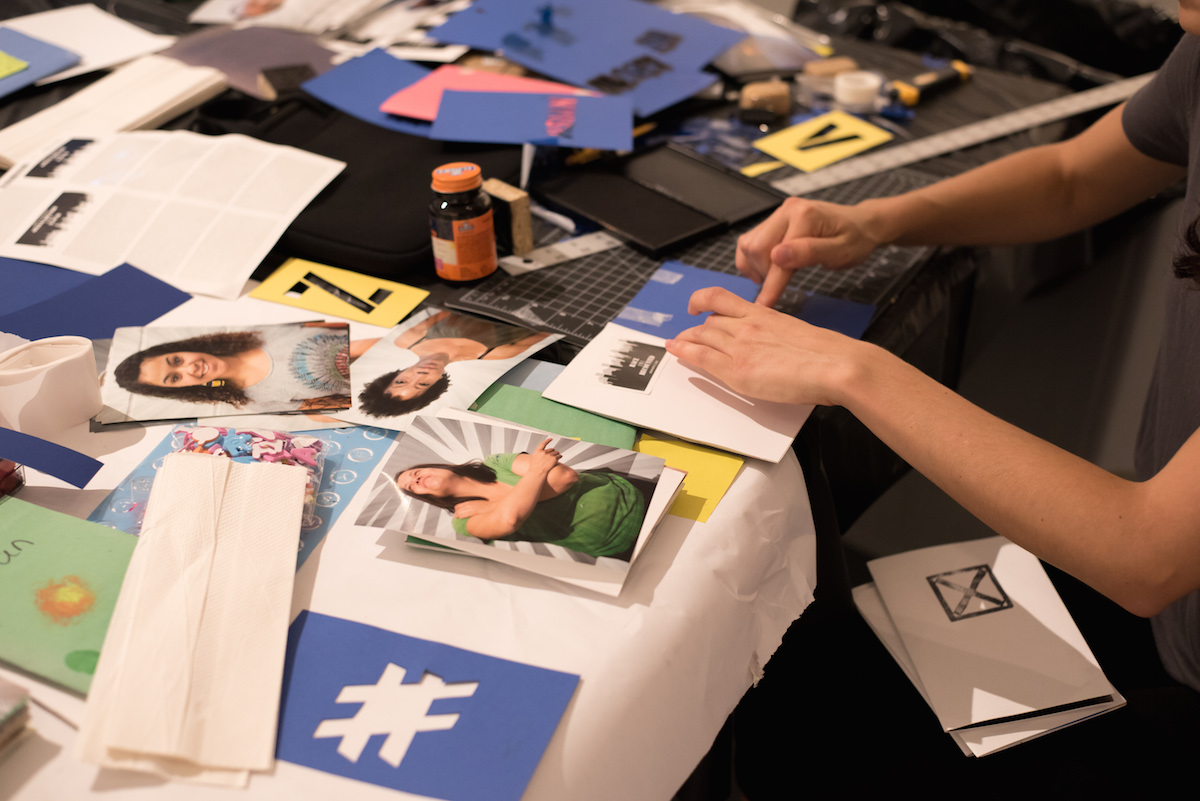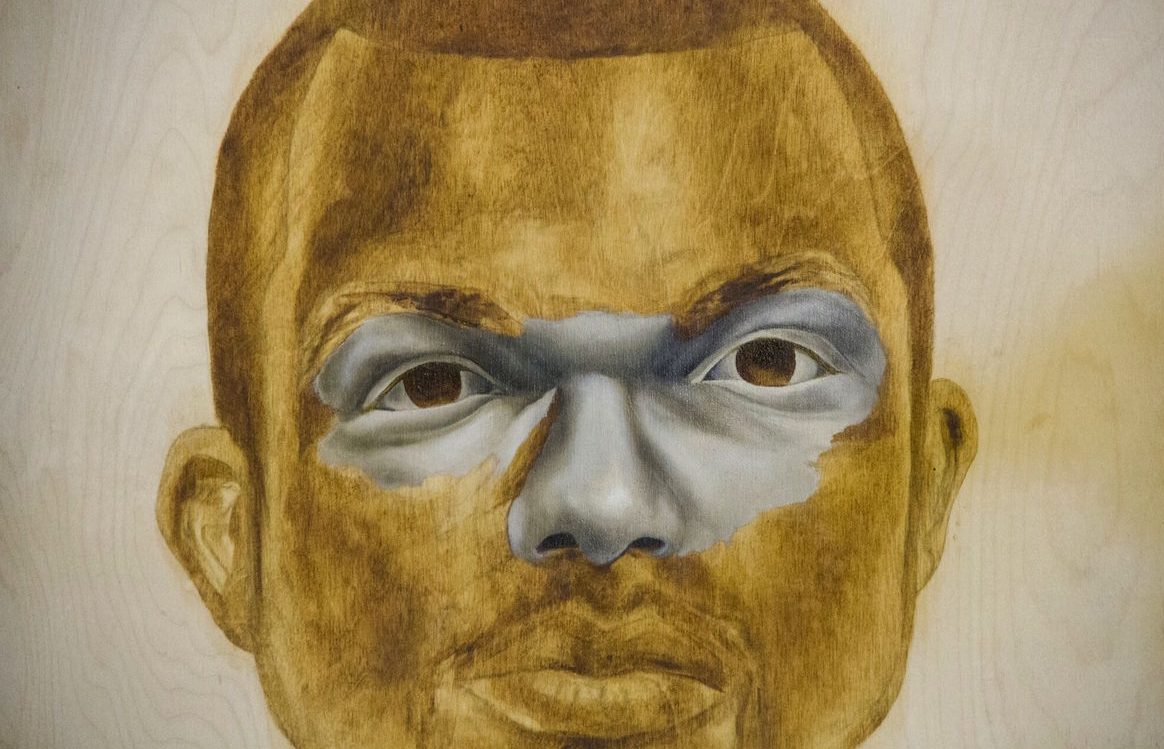Kyle Hackett Interview and Studio Visit by Paul Shortt
Kyle Hackett is a figurative painter primarily working in oil. His paintings, which often feature his own image in black and white, spark questions not only about black identity but the history of figurative painting.
Hackett received his MFA in Painting from the Hoffberger School of Painting at the Maryland Institute College of Art (MICA) in 2013, and teaches at Montgomery College in Rockville, MD and Archbishop Carroll High School in DC. He is currently based in Washington, DC.

Can you talk about your painting process?
My need to make art starts with my need to confront social and cultural challenges. My painting process starts with my belief about establishing conditions to think and generate knowledge for yourself. Consequently, my studio has developed into an introspective environment where I can slow down, reflect and interrogate longstanding approaches in painting and attitudes around identity that are somehow still relevant centuries later.
I’m looking at representation through ideas of secure identity and fixed “master painting” techniques. I’m unpacking the “constructed image” as I attempt to clarify my contemporary hopes, fears and insecurities about racial and socioeconomic progress. By putting myself in the position of sitters from precarious 19th and 20th century modes of portrayal, my work is rooted in the need for empathy and a historical desire for connection and feeling. I’ll take hundreds of reference photos, all slightly different variations. Considering a specific time, place or emotion, I will select about three or four to inform for the actual painting.
Using academic multilayered painting approaches my work deconstructs the technical and social fabric created by, but not limited to, painting tradition. I emphasize conflicts of inner vs. outer in hopes to foster new realities and new ways of being understood as not brown or white, wealthy or poor, but human. Often-acknowledging classical method’s incapacities for telling the truth, I stress ideas of vulnerability, false glamorization and anxiety of reconciling the past with the present.
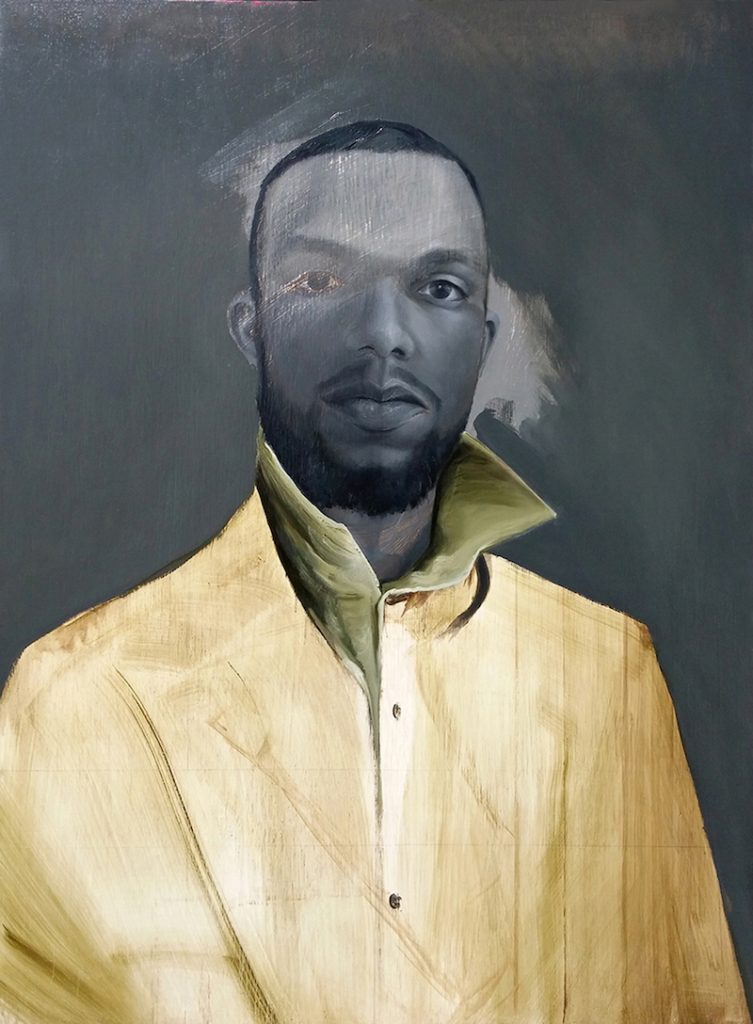
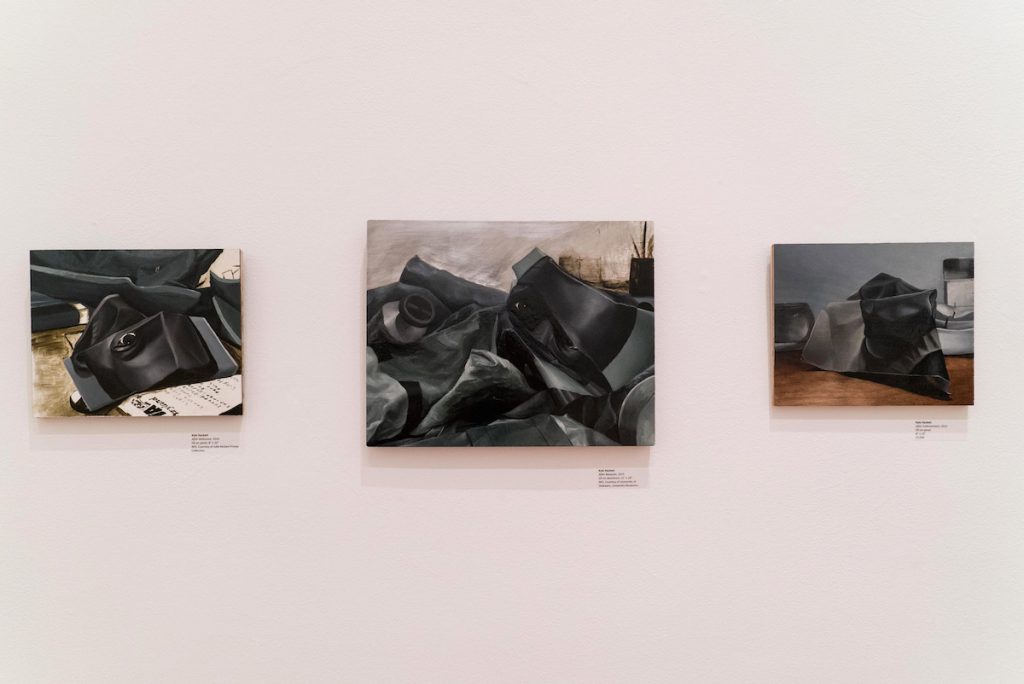
You work primarily features paintings of yourself and you seem to be throwing representation into question. I’m thinking specifically of the paintings of crumpled up photographs of yourself. Can you talk a bit about this?
I should preface by saying that I make paintings to come to terms with my position at a particular moment in time; they’re somewhat like journal entries or visual tombstones so that I can move on. I really just want the viewer to stand in front of my work, that might not look like them, and empathically connect and begin to feel what I was going through when I made the work in the first place.
The crumpled paper works are recycled photographs the were, at one time, ruled out and discarded reference photos of my portraits. This later evolved into crumpling show cards with reproductions of my own work. It’s a lot about finding way to reflect. I noticed that it was liberating to crumple myself, because then I would move things around more freely and put this stressed paper next to objects, tape it, hang it, get over it, etc.
I’m very conscious about what objects go into these paintings and how they are painted. I’m not looking to depict a literal narrative by filling a frame with objects. I’m more interested in the ideas behind the feelings – the quick and visceral action of crumpling and where that happened, followed by the more reflective and longer process of painting.
Ultimately this allows me to create a painting with a similar emotional content, but without the immediate and seductive distractions of the portrait. It also offers a chance to work smaller and much more quickly through collective ideas. The subject might become paper, used up shells, or stressed masks, but nonetheless opens up new territory for exploration.
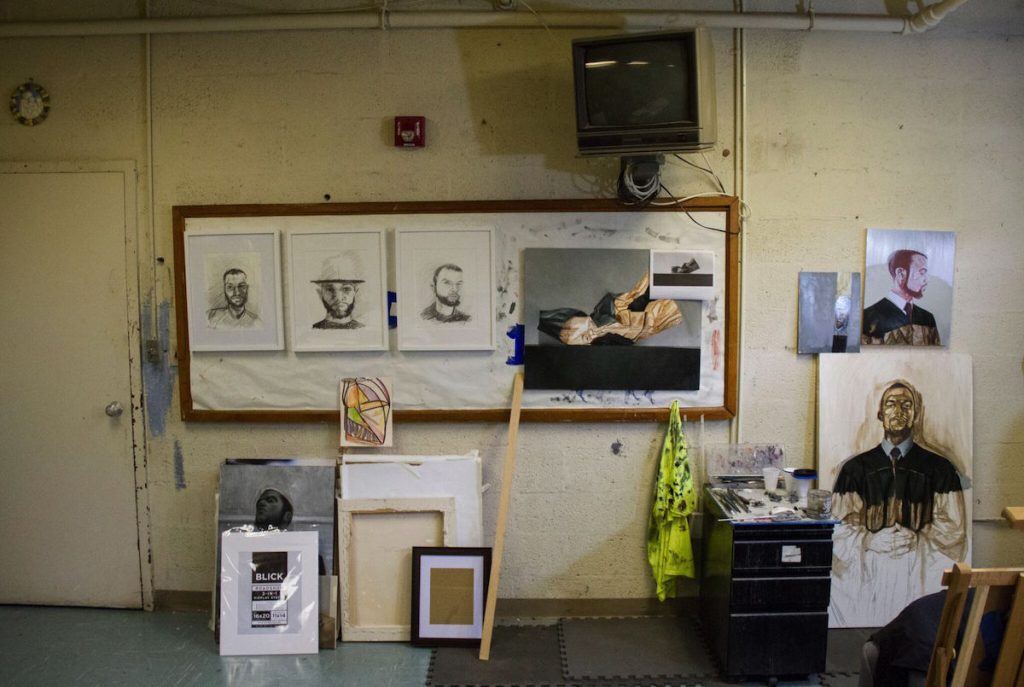
What were your experiences like at MICA?
My time at MICA was crucial to where I’m at now. In graduate school, I began nascent ideas of what I would later call the “Portraits of Progress” and the “Vanitas” paintings. MICA’s Hoffberger School, one of the best in the country, gave me an elite platform to show work and discuss ideas with great minds. It also, gave me a direct connections with galleries and influencers the New York art world.
One of the only grad programs left that is devoted to painting, I was intellectually and artistically stimulated in a very direct way. Because most of my peers had a propensity towards abstraction, I quickly learned how to unpack the abstract/formal language of painting in a way that I can discuss and talk about any kind of work at it’s essence. At the time, I didn’t see this happening in any other programs and I didn’t realize how important this was for me. In fact, I still haven’t or for that matter, spoke with an artist or critic as sharp and gracefully poignant as my graduate director, Joan Waltemath. Graduate school was definitely a rich time that dramatically accelerated and helped to shape my identity as an artist.
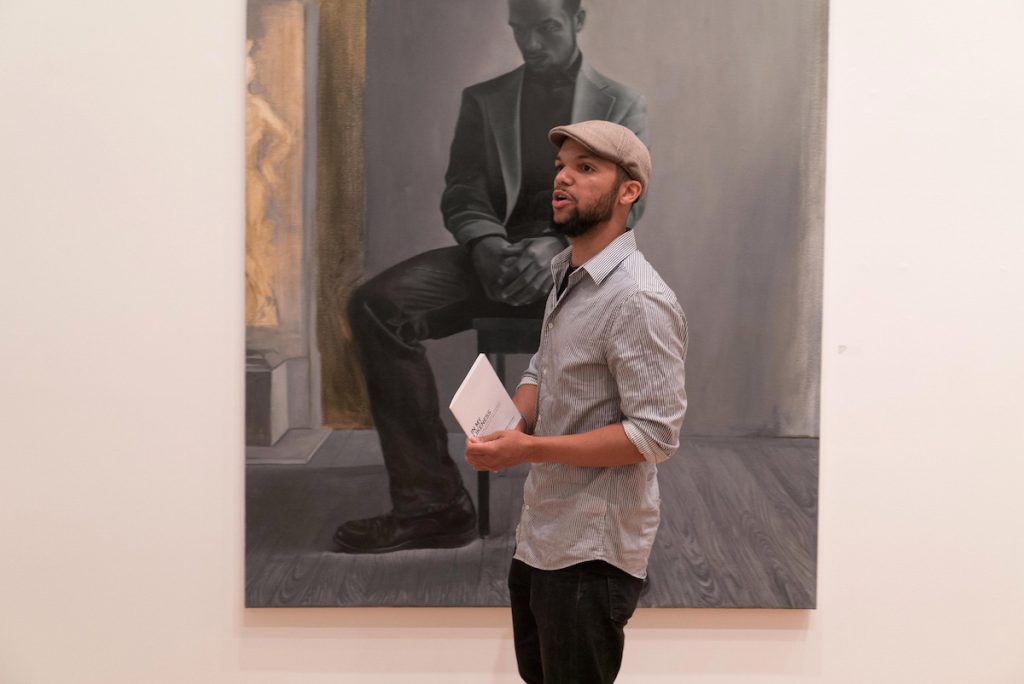
You currently teach at Archbishop Carroll High school in DC. How has teaching high school students affected your painting?
What is best in me as a teacher, I owe to being an active artist. Teaching high school students across many levels, keeps me sharp technically and is often a humble reminder of the magic of creativity. It’s very powerful to help foster student’s raw and honest imaginations when you can guide them to create something they care about.
Time, of course, is the biggest luxury and there’s a difficult balance to being a teacher and being a serious artist. Archbishop Carroll has been very supportive already to my career as an artist, in so far that they have generously allowed me studio space at school.
Instead of trying to keep my teacher and artist life separate I’ve embraced the fact. I frequently invite students and colleagues into my studio to share the process of trying to generate knowledge and understanding through creative space. When I have exhibitions and events, I explain to students what goes into it. I show them because I want to let them know, the stuff we talk about in class, it’s real. One of my goals when I started teaching was to establish a notion, driven by my career as an artist, where visual arts/creativity is associated with sophistication and critical thinking.
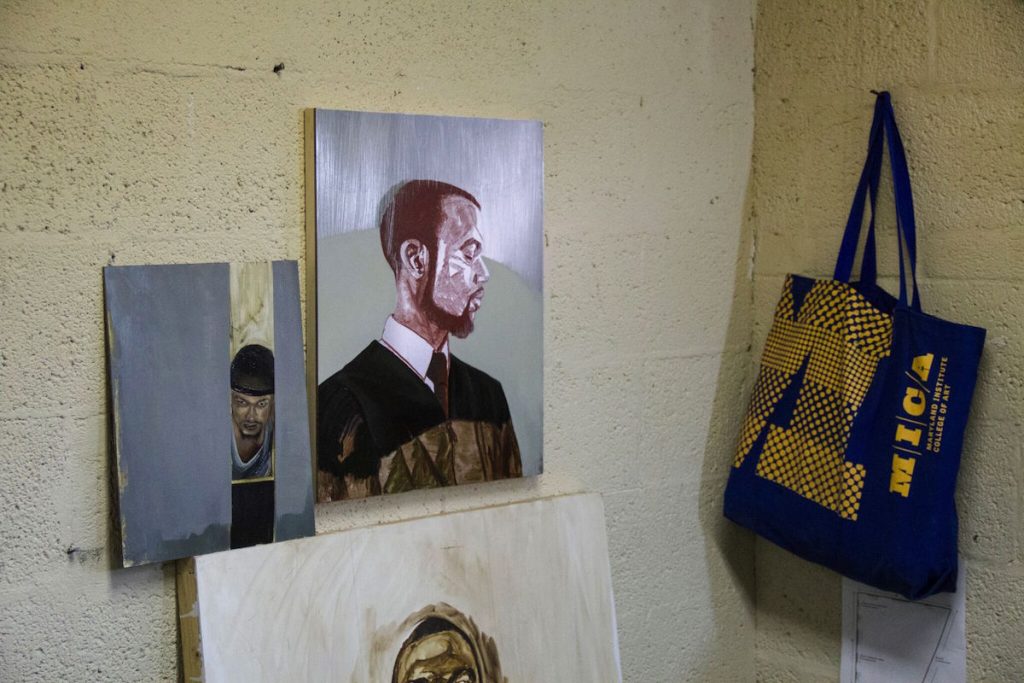
What current or upcoming exhibitions do you have coming up?
I’m currently part of an exciting group show titled, “In My Likeness”, at Goucher College’s Silber Gallery in Baltimore, which runs through August 14th. Followed by that, I will have a solo exhibition at Yellow Door Gallery in Leonardtown, MD starting September 2nd. I was also invited to the Rehoboth Art League Biennial Exhibition in September/October. Needless to say, it’s been a very busy, but very exciting time. I have a bunch of new work in progress that I’m looking forward to sharing.
*****
Author Paul Shortt is a visual artist, writer and arts administrator. He received his MFA in New Media Art from the University of Illinois at Urbana-Champaign and his BFA in Painting from the Kansas City Art Institute. He was formerly the Registry Coordinator and Program Assistant at Maryland Art Place. He is currently the New Media Curator for Arlington Cultural Affairs in Arlington County, VA and lives in Washington, DC.
Check out more of Kyle Hackett’s work at his website: http://www.kylehackettstudio.com.
